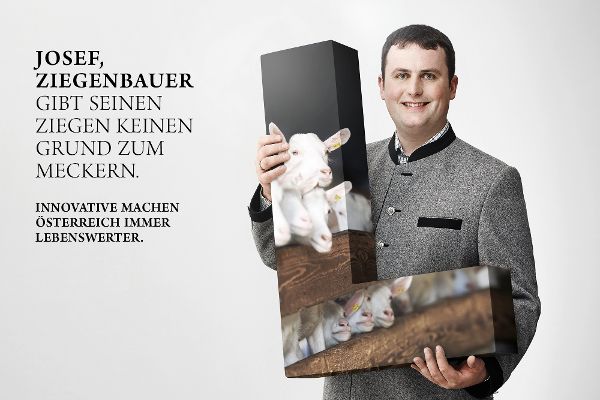New investment aid for agricultural holdings

Compared to the previous period, the upper limit for costs eligible under the subsidy scheme has been substantially raised.
Austria's agriculture is faced with stiff international competition. The purpose of the agricultural policy is to improve the competitiveness of farmers by means of a custom-made programme.
Investments in agricultural production do not only boost productivity and strengthen innovation, but also contribute significantly to environmental and climate protection. Investment support thus continues to be a key measure in the new Rural Development Programme.
On the one hand, targeted investments provide holdings with a long-term income base. On the other hand, they provide an opportunity to implement the necessary adjustments in animal welfare, sanitary conditions and work management. In many cases, the local economic conditions call for specific strategically oriented investments.
Austria's agriculture is faced with major challenges - especially when it comes to global competition. Therefore, one of the main tasks of Austria's agricultural policy was to provide optimal support to the country's farmers in an effort to improve competitiveness by devising a custom-made programme.
However, some of the applications for investment support filed by the Federal Provinces could not be approved, because the available funds had been used up.
In providing a host of new features, the new programme is a response to this situation. Holdings with good prospects of achieving growth were taken into account as well as holdings less favoured on account of their natural location or other difficulties. Ensuring ubiquitous management of Austria agricultural areas can be considered the overriding objective.
Funds have been substantially increased
Generally, the aim is to give agricultural holdings the ability to keep pace with the market or improve their competitiveness. At the same time, particular attention is devoted to environmental protection and resource efficiency. In addition, the measures are intended to help improve the life and work situation, promote animal welfare and ensure appropriate sanitary and quality conditions in production.
The proportion of subsidies for investments in agricultural production
has been substantially increased. Natural persons and entities as well as farm cooperation ventures get to apply for a subsid. This subsidy may be granted as an investment allowance, as an interest allowance for an agricultural investment loan or as a combination of both.
The investments eligible for subsidies are:
- structural and technical investments for stable construction and farm buildings;
- including equipment and technical systems for indoor mechanisation;
- biomass heaters;
- investments in alpine pastures;
- structural and technical facilities for the preparation and processing as well as marketing of agricultural products;
- special machines for mountain famers as well as jointly acquired
- harvesters, jointly acquired devices for ground-level application of liquid manure and jointly acquired plant protection and direct-sowing equipment;
- irrigation facilities as well as investments in horticulture, fruit growing and viticulture;
- investments in breeding and production facilities for beekeeping.
The new investment programme combines the experience gained in the last very successful programme with new stimulating elements. It was developed in the course of a broad discussion and has been submitted to the European Commission for approval. At the same time, the details of the subsidy scheme are being integrated into the new subsidy guidelines.
Selecting the best projects
Unlike in the previous period, every investment project for which an application is filed must run through an approval process consisting of several stages. Except for planning and other preliminary activities, only projects that commence after receipt of the application will be subsidised. Any early start may lead to full exclusion.
To encourage greater target-orientation and more clear-cut focus definition for subsidies, a special process has been introduced to select the projects on the basis of a specific set of criteria. This allows for improved budgeting with the available funds. In addition to the investment's efficiency and effect on income, issues regarding energy efficiency, environmental impact, emissions, water balance as well as animal welfare are rated as well.
Since 26 March 2014 it has been possible to submit applications for subsidies under this new programme. However, until the programme has been finally approved and the selection criteria defined, no subsidies can be granted. The filing of an application in itself does not entitle to subsidies. It is therefore recommended to wait with the application until all the general requirements have been set. It is also very important that investments are planned as best as can and to use appropriate advisory services.
In order to accommodate the increased need for investment, the upper limit of costs eligible for subsidies has been substantially raised compared to the previous period.